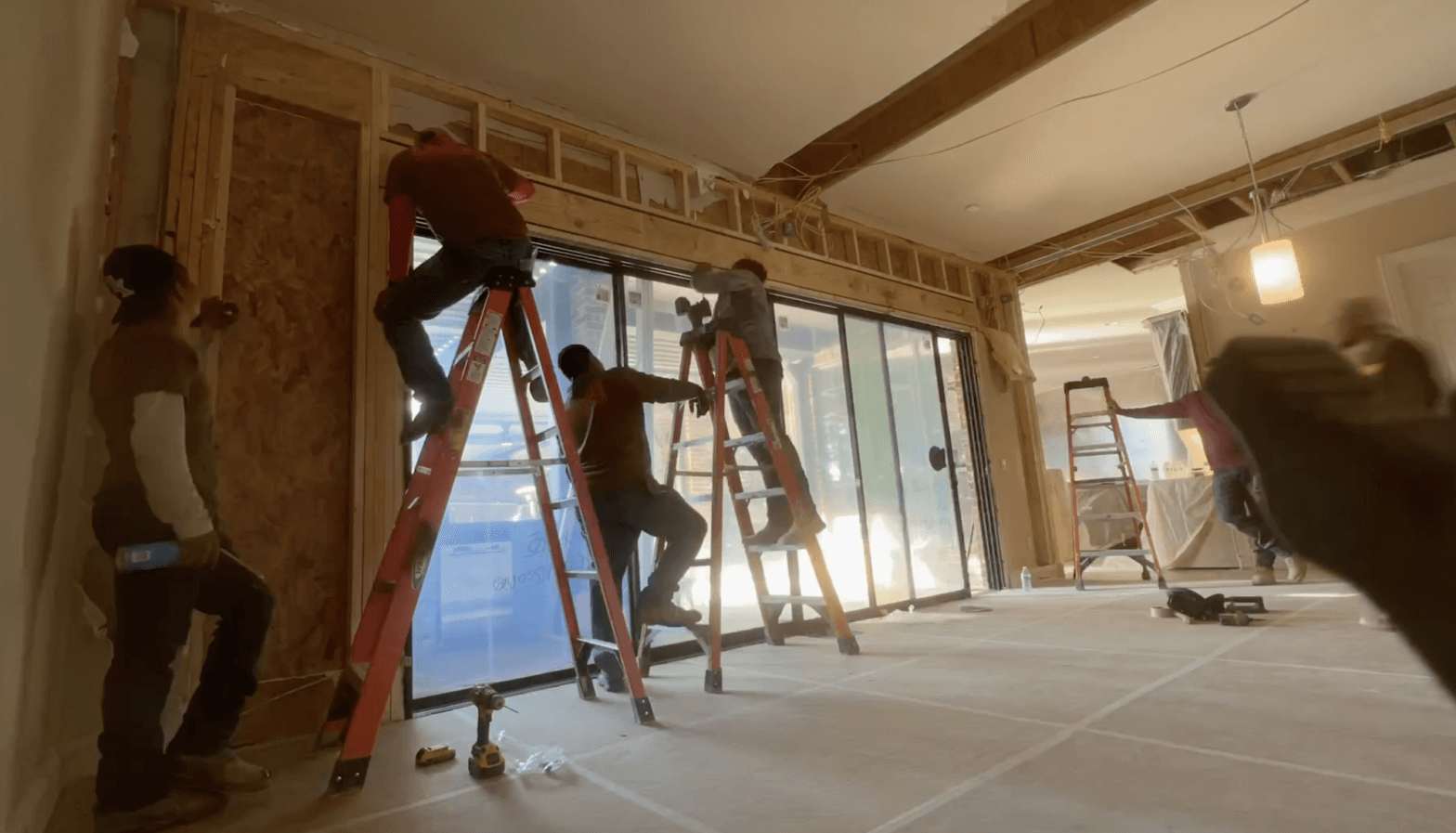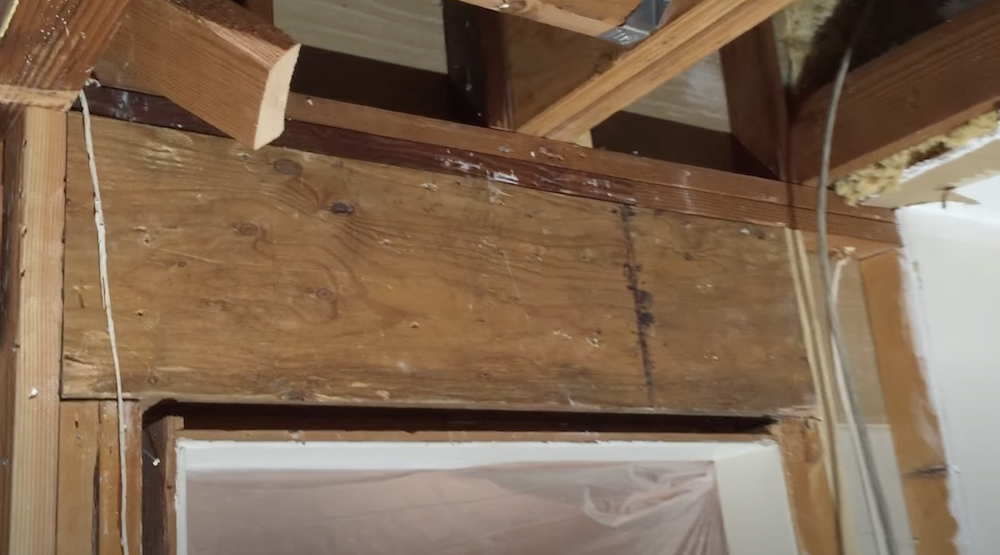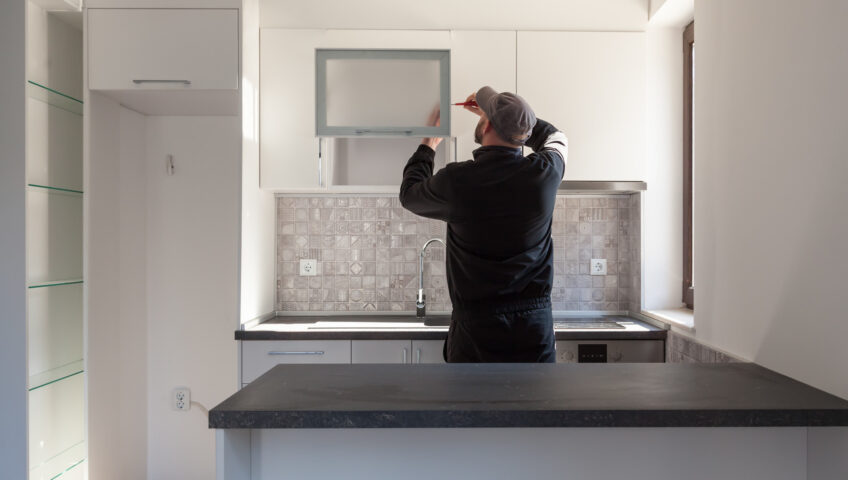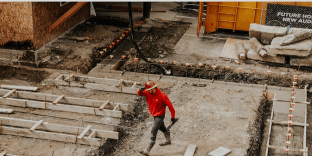
Wall Removal for Commercial Spaces: Enhancing Office Layouts
Who likes to walk into a boring working space where you don’t feel like you can find camaraderie with those on your team or sit in a small cubicle-type area? We’re guessing that your answer is shaking your head or simply saying, “no”. If you are looking for a way to improve the feeling, the function, or the fun feeling of an open space of your commercial space, you may want to consider wall removal. Wall removal is a process that involves taking down interior walls to create an open and spacious office layout. It has increasingly become a popular trend among business owners who want to optimize their work environment and increase their productivity, efficiency, and profitability. (Bonus points for teammate bonding).
Wall removal in commercial spaces has so many benefits for the above, but also for culture:
- Improving the flow and circulation of air, light, and energy
- Enhancing the communication and collaboration among employees and clients
- Increasing the flexibility and adaptability of the space for various purposes and arrangements
- Creating a modern and stylish look that reflects your brand identity and values
- Boosting the value and appeal of your property in the market
Here’s the thing. Wall removal also requires careful planning and professional guidance, as it can involve structural changes, challenges, and solutions. You need to consult with experts, such as architects, engineers, contractors, or designers, who can help you achieve your goals and ensure the quality and safety of the outcome. That’s where we come in.
Why Choose Wall Removal for Your Office Layouts?
Wall removal can transform your office layouts by creating open and spacious workspaces that offer many advantages over closed and confined spaces. Some of these advantages are:
- Improved Flow and Circulation: By removing walls, you can improve the flow and circulation of air, light, and energy throughout your office space. Flu season? Be gone. This can create a more comfortable and healthy work environment for your employees and clients. It can also reduce the need for artificial lighting and ventilation, which can lower your energy costs and environmental impact.
- Enhanced Communication and Collaboration: By removing walls, you can enhance the communication and collaboration among your employees and clients. You can create a more connected and interactive workspace where people can see, hear, and talk to each other more easily. Those meetings that could be an email can now be a conversation over a wall or even a paper airplane across your LARGE space! This increases productivity through relationships.
- Modern and Stylish Look: By removing walls, you can create a modern and stylish look for your office space that reflects your brand identity and values. You can showcase the architecture and design of your space with minimal distractions. You can also add contrast and interest to your space by using accent pieces such as rugs, lamps, or artwork. We’ll talk about that later.

What to Consider Before Wall Removal?
While wall removal has many benefits for your office layouts, it also requires careful consideration and planning before you start the process. Wall removal is not a simple or easy task, as it can involve structural changes, challenges, and solutions. You need to consult with experts who can help you achieve your goals and ensure the quality and safety of the outcome. Don’t be scared. That’s where we come in.
Some of the things that you need to consider before wall removal are:
- Structural Integrity: Determine if the walls that you want to remove are load-bearing or non-load-bearing. Load-bearing walls are walls that support the weight of the roof, floor, or ceiling above them. Non-load-bearing walls are walls that do not support any weight and are only used for separation or decoration. Removing load-bearing walls can compromise the structural integrity of your office space and cause damage or collapse. Therefore, you need to consult with an engineer (or us) who can assess the structural impact of wall removal and provide solutions, such as installing beams, columns, or braces, to support the structure.
- Electrical Wiring: Identify if the walls that you want to remove contain any electrical wiring or outlets. Removing walls with electrical wiring can cause electrical hazards or damage to your office’s electrical system. Therefore, you need to consult with an licensed electrician who can relocate or reroute the electrical wiring or outlets safely and properly.
- Plumbing Pipes: Put on your detective hat and locate if you want to remove or relocate any plumbing pipes or fixtures. Removing walls with plumbing pipes can cause water leaks or damage to your office’s plumbing system. Therefore, you need to consult with a plumber who can relocate or reroute the plumbing pipes or fixtures securely and correctly.
- Heating and Cooling Vents: Check if the walls that you want to remove have any heating or cooling vents or ducts. Removing walls with heating or cooling registers/vents need to be relocated/rerouted. Therefore, you need to consult with an HVAC technician who can adjust or modify the heating or cooling system accordingly.
- Permits and Codes: Obtain any necessary permits or approvals from your local authorities before you start wall removal. You also need to comply with any building codes or regulations that apply to your area. You don’t want to run into any fines, penalties, or legal issues.
We provide consultation with everything above! By considering these factors before wall removal, we can ensure a smooth and successful process that meets your expectations and requirements. You can also avoid any potential problems or complications that may arise during or after wall removal.
How to Enhance Your Office Layouts After Wall Removal?
After wall removal, you can enhance your office layouts by creating functional zones within your open spaces that serve different purposes and activities.
Now… wait for it… it’s time to have some fun!
Some of the methods for enhancing your office layouts after wall removal are:
- Furniture Arrangement: You can use furniture pieces, such as desks, chairs, sofas, tables, or cabinets, to create boundaries and divisions between different zones in your office space. For example, you can use desks to separate the work area from the lounge area, or sofas to separate the meeting area from the reception area. You can also use furniture pieces that have multiple functions, such as a sofa bed, a coffee table, or a bookcase, to save space and add convenience.
- Rugs and Mats: You can use rugs and mats to create visual and tactile contrasts between different zones in your office space. For example, you can use a rug to define the seating area, or a mat to define the entryway. You can also use rugs and mats that have different colors, patterns, or textures to create interest and variety in your office space.
- Lighting Fixtures: You can use lighting fixtures, such as lamps, chandeliers, or sconces, to create focal points and ambiance in different zones in your office space. Think about this: you can use a lamp to highlight the reading area, or a chandelier to accentuate the dining area. You can also use lighting fixtures that have different brightness, color, or style to create mood and atmosphere in your office space.
- Plants and Accessories: You can use plants and accessories, such as flowers, vases, paintings, or sculptures, to add life and personality to different zones in your office space.You can also use plants and accessories that have different shapes, sizes, or themes to create harmony and balance in your office space.
By following these tips and guidelines, you can make the most out of wall removal and enjoy its potential advantages for your office design. You can also share your experience and knowledge with others who may be interested in trying wall removal.


